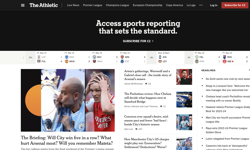Reports of the death of print have been greatly exaggerated! Newspapers are actually performing quite well, given the economy and revolution in the marketing environment. Yes, circulation and advertising revenues are under pressure, but I continue to be very positive about the long term future of newspapers, and the franchise they hold, and strongly believe the industry has a great opportunity to control and develop future revenues.
Let me explain; 80% of advertising revenue in the majority of the regional press comes from the local market, the other 20% is made up from digital, other and national ads.
It’s true that online advertising is getting bigger, bolder and more sophisticated, but it still only represents around 8% of newspaper revenues, and in five years’ time, it will still be less than 20%. The internet in the UK enjoys the highest share of advertising expenditure of any major economy in Europe, but newspapers’ share of digital revenues is falling.
In the short to mid-term, it’s local display advertising which offers the greatest opportunity, and this is where publishers should be investing their sales and creative services.
So, why are the regional press losing local customers at an alarming rate? Answer: Sales staff are no longer selling creative solutions. As a result, many advertisers have lost faith in the local newspaper as a vehicle to sell their product and services. The current sales teams are producing ads that don’t do the customer or the newspaper any justice; most ads look like something out of a comic with the over-use of colour, no benefits, no product features and no promotion of the current best sellers.
Publishers no longer control the local market as they did in the 70s and 80s and seem content to take only what the market is giving to them. Over the last ten years, the advertiser count for the regional press has halved! Most regional publishers have some awareness of this, but no actual system in place for measuring it or process for dealing with it.
Sales staff development
What I recommend is a staff development programme focused on selling creative local advertising that sells. Extraordinary results can be achieved in a very short time. A quick injection of say £5,000 in such a programme will deliver fifty times the net value of any iPhone app.
Is it reasonable to ask what percentage of development investment is going into the 78% of gross profit which comes from print advertising, compared with the 5% that comes from digital?
I, like many senior executives within the regional press and many readers of this publication, went though the Thomson staff training program. Those of us who came through advertising were trained to understand the key elements of a successful newspaper ad: headline, body copy, illustration, logo, call to action and white space! In short, how newspaper advertising works and how to make it work harder.
My recent involvement hosting one day creative training workshops with a number of UK and Irish regional publishers has highlighted a need to inject knowledge of basic sales principles, creative thinking and price optimisation relative to value of return.
The root of the problem seems to be the lack of sales coaching and direction, which leads me to another question: are sales managers really coaching salespeople effectively? Too often, sales managers wear their BOSS hat, instead of their coaching hat, especially when they’re behind on revenue targets, and, really, do they have the time? Also, managers mistake what should be coaching time with the ever expanding demand for paperwork and meetings! Is it just me, or are all your colleagues so meetinged–out justifying themselves to their bosses that they have little time to talk and give direction to their staff? Data on call rates and pricing should be automated reports, not time wasters for managers.
Effective sales coaching is a critical component for newspaper advertising sales departments to get better, to standardise sales processes, encourage creativity and to identify the strengths and weakness of individuals in the wider sales and creativity process. As an ex-newspaper sales trainer, it still mystifies me why almost all of regional press either reduced or disbanded their training departments and handed the role to the sales manager as part of their daily tasks. Many of the current sales managers have no formal training on how to deliver or evaluate the effectiveness of training given to sales staff.
Sales teams need to be driven by new ideas; know-how and the daily coaching in the creative sales skills and opportunity spotting required to be a successful advertising sales person.
A visual medium
We are a visual medium; we can deliver very high impact images in various shapes and sizes, while ensuring professional selling. The one problem is that there is very little selling within the local ads produced today.
Sales staffs need more training on how to produce an advertisement. Sales staffs have always struggled to fill in a creative job bag and very few would supply a visual layout. As the role of ad production has moved from advertising creativity to production efficiency, how much creative effectiveness has been lost, and with it client confidence? As a sales person, I sold on visuals; in fact any call, regular or new, would have a visual as part of the sales process. One publisher I have worked with actually discouraged the use of visuals, because of the time taken in the studio and cost.
The best part of my “Selling Creative Advertising that Sells” sessions comprises of a hands-on workshop, creating and designing ads and understanding the key components. It’s a real Blue Peter moment with lots of cut and paste. Preparing visuals and how to create scamps out on the patch to use as selling aids, as part of closing the sale, or to encourage positive feedback.
At this point, I know some of you are thinking, “that’s what I used to do”, so why are so many of today’s sales people not applying these very basic, but necessary skills?
I was recently commissioned to conduct over sixty face to face, current and lapsed customer reviews on behalf of one publishing group, with the objective to establisher the level of customer service, and whether or not the regional press was still seen as representing value for money. The feedback from the market highlighted how disconnected and undervalued by the local publisher the customer feels, and also how the service by the direct salesperson and creative input was not held in high regard. Yes, sixty is arguably a small sample, but my experience tells me this is an industry-wide problem. Is your newspaper delivering a good service, are your sales team “selling” the benefits and the flexibility options of newspaper advertising? Do you know what your valued customers think about you? Are you confident your sales teams are controlling your local market or are your local sales teams missing a trick? Only you can answer that.
On the evidence of my interviews with a mixed profile of customers, many claimed the radio sales guys offered the best service, the best ideas and willingness to take the time to understand the customer’s needs and objectives. Although I have highlighted the negatives, because they are a great concern, there were a number of positives, including the power of the local press to a small number of customers when driving results. It’s no accident these are the customers that have a salesperson of many years’ experience with a good understanding of the customer’s business needs and objectives.
Unappealing ads
Creativity can be simple visual executions or understanding how to use different sized ads in the right environment or within the many platforms a newspaper can offer. My next question is, why are most ads square in shape? Why are many local ads in reverse block with outrageous colours such as yellow, green and browns, when so much research points to the failure of such creative approaches? Who is managing the look of the paper?
My local free newspaper is a classic example of ads that I question can deliver any measureable results for the advertiser. One small ad, in 6 point and in a shocking pink reverse block, advertising nail extensions I think, on a page with lots of other small ads in many varied bright colours! What chance has a reader responding to a message they can barely read, and placed on a page that looks like an explosion on a paint pallet. That advertiser has paid hard earned cash and the promotion and success of the offer lies with a salesperson who should be advising on how to best use the space booked.
So here are some simple ideas on how your publications can deliver advertising that sells.
1. Weekly Creative Workshops
Two hour workshops once a week, studying the best creative practices, working on strong headlines and good selling body copy with benefits, features, and reasons to buy, logo and calls to action, with opening times, directions etc, when and how to use colour effectively, illustrations that complement the product and why white space brings ease of reading and clarity.
Have the staff create their own scamps to supply the production department and supply a layout which takes away the guesswork and ensures the customers’ products are presented in a professional and clear way. Have a cut and paste session on how to present a visual on a piece of black card, with the rep’s business card positioned on the front. Critique ads from the bigger brands and learn the tricks from the experts. From my own experience, the sales people have great fun and are keen to explore their own creative boundaries.
2. Client Ad Clinics
Invite your customers to evening ad clinics and educate them in the principles of what makes a good press ad, why it makes more sense to promote best sellers and why series and planned advertising will deliver better results.
Demonstrate the flexibility of print media and how the many platforms offer different readership and targeting opportunities. The biggest benefit is the chance to re-connect or build stronger relations with your customer base in an informal way. A glass of wine and a tour of the building are always a hit for those who have never visited a newspaper office.
3. Ad effectiveness studies
Work with a number of your key clients to undertake an “ad effectiveness” study with the objective of demonstrating the power of the press, with a clearly defined expectation of results, using a combination of various sized ads on different days of the week, in colour and mono with different copy offerings planned over a number of weeks. You may even consider two different campaigns with a comparison of results, published as a case study and testimonial to the value of your publication.
4. Rewards for Creativity
To accompany the monthly sales awards, also have the “Best creative ad of the month”, building up to ad of the year. Have a fixed set of judging guidelines. Encourage every salesperson to submit an entry. Display the ad of the month around the building and, of course, include the customer as he will also want to display a winner! If your newspaper is part of a group, why not have a company-wide competition to encourage the exchange of winning ideas.
5. Expand your creative workshops
The development of digital revenue will only come from the ability to sell the concept and help the customer understand their part in the relationship. The salesperson needs to be able to communicate the creative flexibility opportunities to a local customer who really doesn’t understand how new media works. Many of them have websites with poor traffic flow, because their digital marketing is ineffective. As part of your customer service, host a number of digital workshops; invite guest speakers who can share their experience of good internet marketing.
The days of blaming the internet, other competition or the economy are over. A positive and successful future is in our own hands, by properly investing in sales team training and development. One thing I do know, customers buy ideas, and selling creative ideas that drive results will return the control of your local patch.










